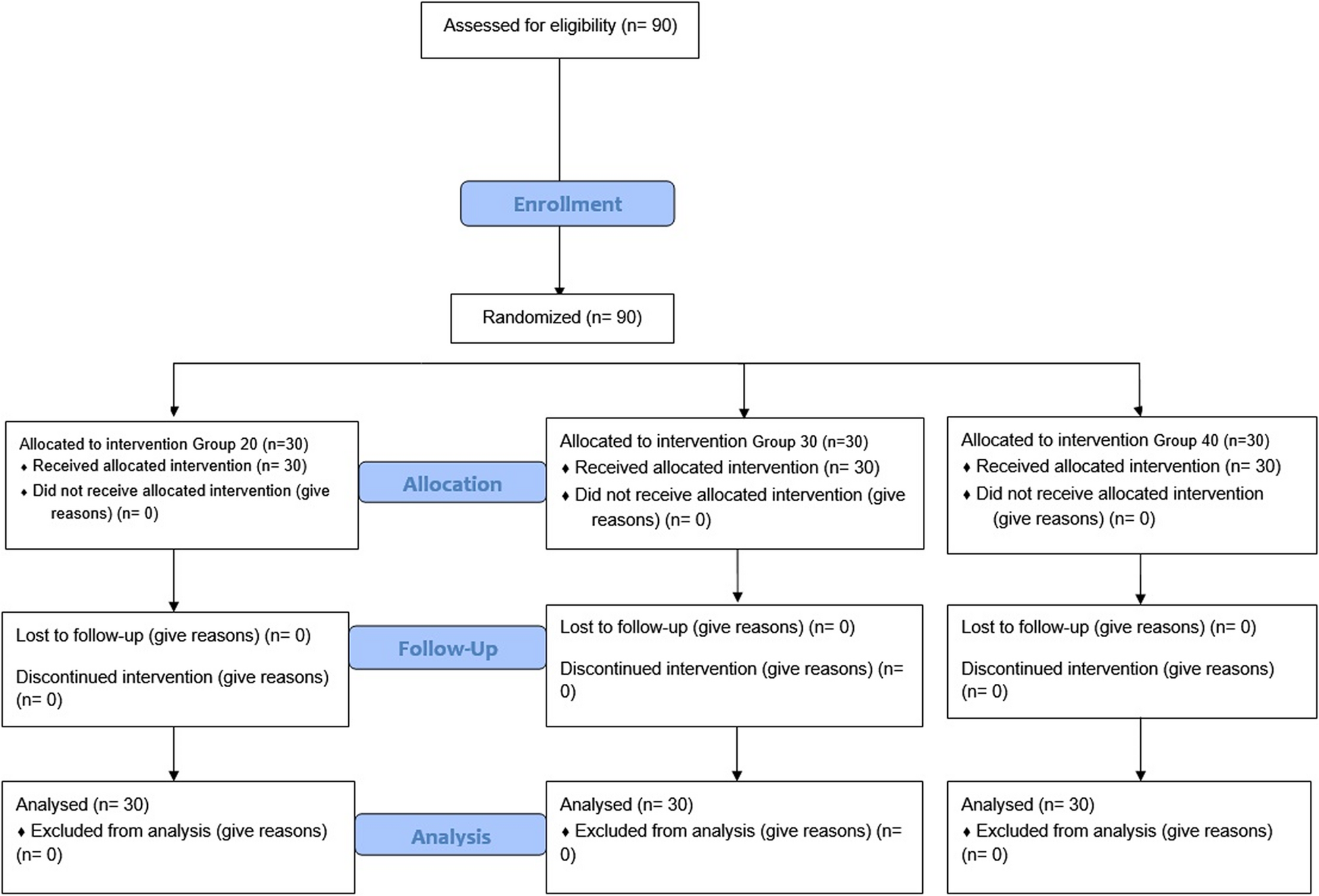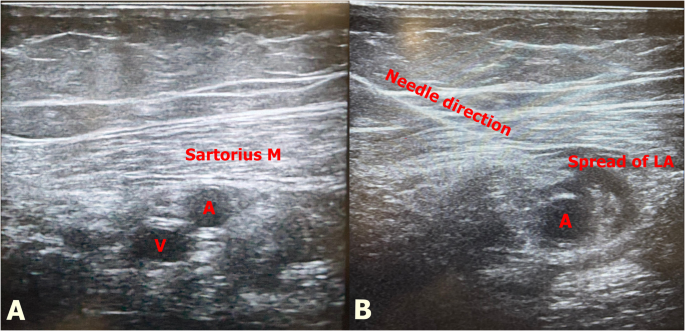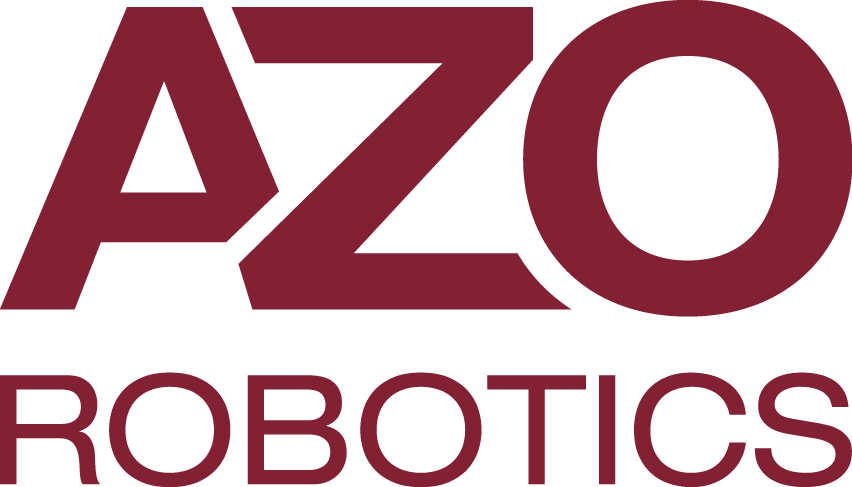Panasonic has rolled out new LUMIX firmware updates for several cameras and S Series lenses, improving startup times, adding customizable focus-ring functions, and expanding Bluetooth support for DJI RS 4 gimbals. The updates, available October…
Blog
-

Brain Functions Like Subway Station While Word Processing
Trains move through the world’s subway stations in a consistent pattern: arriving, stopping, and moving to the next stop—and repeated by other trains throughout the day. A new study by a team of New York University psychology and…
Continue Reading
-

How often are stars flung out of the center of the Galaxy? – Sciworthy
The Earth, Moon, and Sun form a stable 3-body system, but there is no simple equation one can apply to 3-body systems to predict their orbits. This 3-body problem becomes increasingly complicated as more objects are added to the system…
Continue Reading
-
Asus Targets Creators With First-Ever 8K HDR Mini-LED Display – extremetech.com
- Asus Targets Creators With First-Ever 8K HDR Mini-LED Display extremetech.com
- ASUS Announces October Availability of ProArt Display 8K PA32KCX ASUS Pressroom
- ASUS Introduces ProArt PA32KCX; World’s First 8K HDR Mini LED Monitor For…
Continue Reading
-

Viet Nam’s labour statistics: From modernization to global alignment
Over the past decade and a half, Viet Nam has transformed the way it measures and understands work. From simple employment counts to a comprehensive, internationally comparable system, labour statistics in Viet Nam have become a cornerstone for evidence-based and gender responsive policymaking and sustainable development.
A decade of transformation and international alignment
The early 2010s marked a turning point for Viet Nam’s statistical system. Recognizing the growing complexity of the labour market in a rapidly developing economy, the National Statistics Office (NSO) embarked on a far-reaching modernization process.
The introduction of the Labour Force Survey on a quarterly basis in 2011 was a major milestone. For the first time, Viet Nam could monitor employment trends, unemployment, and labour underutilization in near real time. This shift from annual to quarterly data collection not only improved accuracy but also enhanced the government’s ability to respond to economic shifts and social challenges.
Viet Nam’s commitment to aligning its data with global standards quickly positioned it as a country with advanced labour statistics. The NSO worked closely with ASEAN partners, the ILO, and international experts to harmonize definitions, methodologies, and indicators. 2025 also marks the fifth year applying 19th International Conference of Labour Statisticians standards advancing Viet Nam’s labour statistics – a move that redefined how employment, work, and labour underutilization were measured worldwide. The adoption of internationally comparable labour market indicators allowed Viet Nam to contribute actively to global databases and to monitor progress toward the Sustainable Development Goals, particularly Goal 8 on decent work and economic growth.
This progress has made Viet Nam one of the few developing countries in Asia capable of producing timely, high-quality and gender responsive labour statistics that meet global comparability standards – an achievement widely recognized by international partners.
Data responding to quick changes in the labour market
The true value of a robust statistical system often becomes clear in times of uncertainty. When the pandemic struck in 2020, Viet Nam’s quarterly LFS and well-trained statistical network proved essential. Within months, the NSO was able to produce special reports capturing the pandemic’s impact on jobs, income, and informal employment – data that guided targeted government interventions and social support measures.
Among the most important advances – and clear examples of how labour statistics in Viet Nam have kept pace with a rapidly changing labour market – are the explicit measurement and reporting of informal employment and the pilot measurement of digital platform work. Recognizing that more people are doing work mediated by digital platforms – whether ride-hailing, delivery, freelancing, or online provision of services – Viet Nam has begun exploring how to capture this in its labour statistics. This pilot work positions Viet Nam as one of the first countries in Asia to take early steps in capturing the platform economy in official labour data.
This proactive approach shows that Viet Nam’s statistical system is not only robust, but also responsive and forward-looking, ensuring that data remain relevant and timely in reflecting the evolving world of work.
Digital transformation and innovation
In recent years, Viet Nam has continued to push forward with digital transformation in data collection and analysis. The NSO has introduced computer-assisted personal interviewing (CAPI), expanded the use of administrative data, connecting with other databases. The NSO also starts to introduce artificial intelligence to some stages of data management. Noticeably, artificial intelligence has been applied to data cleaning and automatic classification of data. These innovations improve not only the quality of data but also the efficiency of the whole statistical system responding timely to the rise of the digital age.
Felix Weidenkaff, Officer-In-Charge of the ILO Viet Nam participates in the Commemorative Ceremony and High-Level Forum in Viet Nam for World Statistics Day Looking ahead
As Viet Nam moves toward a digital and knowledge-driven economy, the demand for high-quality, timely, and disaggregated labour data will continue to grow. The NSO’s ongoing efforts to modernize surveys, apply artificial intelligence in data processing, and enhance data integration are laying the groundwork for the next generation of labour statistics.
The success of Viet Nam’s labour statistics rests on strong partnerships with national and international organizations. Together, these partners have worked to strengthen the technical capacity of national statisticians, improve data dissemination, and promote the use of statistics for informed decision-making. Viet Nam has also become an active contributor to regional and global discussions on labour measurement, sharing experiences that inspire neighbouring countries.
On this World Statistics Day, Viet Nam’s achievements remind us that statistics are not just numbers – they are a foundation for understanding people’s lives, shaping fairer policies, and building a more inclusive future. As the world marks this day under the global theme of Driving Change with Quality Statistics and Data for Everyone, Viet Nam’s progress in labour statistics stands as a vivid example of that vision in action – ensuring that every number tells a story, and every story helps build a stronger nation.
Continue Reading
-

DNA ‘flower’ robots react to environment and deliver drugs
These ‘DNA flowers’ were developed by a team at the University of North Carolina at Chapel Hill and are made from crystals formed by combining DNA and inorganic materials. They can reversibly fold and unfold…
Continue Reading
-

BD Launches New AI-enabled Solutions to Drive Connectivity Across Healthcare Settings
BD Launches New AI-enabled Solutions to Drive Connectivity Across Healthcare Settings
FRANKLIN LAKES, N.J., Oct. 20, 2025 /PRNewswire/ — BD (Becton, Dickinson and Company) (NYSE: BDX), a global leader in medical technology, introduces the BD Incada™ Connected Care Platform, a new scalable, AI-enabled, cloud-based platform that unifies BD device data into one intelligent ecosystem for the first time. The BD Incada™ Platform is available now with the launch of the next-generation BD Pyxis™ Pro Automated Medication Dispensing Solution, creating enterprise-wide visibility and connectivity that transforms data into actionable insight.
“Our vision for the BD Incada™ Platform is to go beyond legacy connectivity to create meaningful connections across devices from infusion pumps to patient monitors to pharmacy robotics, and unify data from those solutions into one ecosystem, transforming data into clear, actionable insights for care teams,” said Bilal Muhsin, EVP and President of BD Connected Care. “These launches represent key milestones in BD’s Connected Care strategy, where we are uniquely positioned with our broad portfolio from pharmacy to bedside, to leverage game-changing technology to drive meaningful benefits for our customers.”
AI-powered analytics to drive smarter, faster decisions
Built on Amazon Web Services’ (AWS) on-demand cloud computing infrastructure, the BD Incada™ Platform leverages the latest in AI technologies, such as natural language search in analytics, and is scalable to meet the data volumes created by nearly 3 million smart connected BD devices. With Analytics in the BD Incada™ Platform, data from BD’s leading medication management solutions now flows through a secure, cloud platform and enables:
- Enterprise-wide visibility into medication inventory, which helps clinicians identify patterns and ensure medication availability, reduce medication waste and improve labor efficiency
- The ability to ask natural language questions and receive AI-powered insights and analytics on demand
- User-customizable dashboards that empower frontline clinical teams to act on insights quickly
Flexible, secure storage to get the right medication to the right patient, faster
The new BD Pyxis™ Pro Dispensing Solution delivers smarter, more secure medication storage, which enables faster access at the point of care. The first-of-its-kind flexible, stackable device configuration offers more medication storage capacity to improve medication availability from refrigerated to ambient storage. The BD Pyxis™ Pro Dispensing Solution allows hospitals and health systems to easily adapt to the evolving needs of their patient populations, with features including:
- Expanded capacity in a similar footprint, enabling clinicians to add up to 538 multi-access or 98 secure pockets without taking more space in their medication rooms
- Enhanced security features to improve controlled substance management and medication safety efforts
- More efficient access, with RFID badge scanning, wireless barcode scanners and illuminated bins to streamline medication retrieval
“For over 35 years, the BD Pyxis™ System has been the backbone of medication management across hospitals and health systems, with more than 9.8 million transactions on BD Pyxis™ devices every day,” said Connor Bates, Worldwide President for Medication Management Solutions at BD. “With the enhanced secure capacity, durability and AI-powered analytics of the next-generation BD Pyxis™ Pro Dispensing Solution, we’re ushering in a transformative new era for medication management.”
Together, the BD Incada™ Platform and BD Pyxis™ Pro Dispensing Solution sets a new standard for unified, data-driven healthcare operations.
About BD
BD is one of the largest global medical technology companies in the world and is advancing the world of health by improving medical discovery, diagnostics, and the delivery of care. The company supports the heroes on the frontlines of health care by developing innovative technology, services and solutions that help advance both clinical therapy for patients and clinical process for health care providers. BD and its more than 70,000 employees have a passion and commitment to help enhance the safety and efficiency of clinicians’ care delivery process, enable laboratory scientists to accurately detect disease and advance researchers’ capabilities to develop the next generation of diagnostics and therapeutics. BD has a presence in virtually every country and partners with organizations around the world to address some of the most challenging global health issues. By working in close collaboration with customers, BD can help enhance outcomes, lower costs, increase efficiency, improve safety, and expand access to health care. For more information on BD, please visit bd.com or connect with us on LinkedIn at www.linkedin.com/company/bd1/, X (formerly Twitter) @BDandCo or Instagram @becton_dickinson.Contacts:
Media:
Investors:
Fallon McLoughlin
Adam Reiffe
Director, Public Relations
VP, Investor Relations
201.258.0361
201.847.6927
fallon.mcloughlin@bd.com
adam.reiffe@bd.com

SOURCE BD (Becton, Dickinson and Company)
Continue Reading
-

Effects of ultrasound-guided adductor canal block at different volumes on postoperative analgesia management in patients undergoing total knee arthroplasty: a prospective clinical study | BMC Anesthesiology
Study design
This randomized, prospective study included 90 patients, aged between 18 and 65, with ASA classification I-II-III, who were scheduled for total knee arthroplasty surgery under spinal anesthesia. Patients with a history of bleeding diathesis, receiving anticoagulant treatment, allergies or sensitivity to local anesthetics and opioid drugs, patients with infection in the area where the block will be applied, pregnancy suspicion, pregnant or breastfeeding mothers, and patients who did not accept the procedure were excluded from the study. Ethical approval was obtained from the Bursa City Hospital Ethics Committee on 07.12.2022, protocol number 2022-17/3. Our study was registered on https://clinicaltrials.gov/ with the number NCT06084403. The patient recording and disribution were illustrated by the Consolidated Standards of Reporting Trials (CONSORT) flowchart (Fig. 1).
Fig. 1 CONSORT flow diagram of the study
Patients were randomized into three groups, each containing 30 patients, using a computer program (Group 20 = group receiving ACB with 20 ml, Group 30 = group receiving ACB with 30 ml, Group 40 = group receiving ACB with 40 ml). The practitioners were blind to the data collection, and patients did not know which volume was applied. Postoperative pain scores and opioid consumption were recorded by a pain technician who was blind to the study.
Anesthesia application
After the patients were taken to the operating room, standard monitoring (electrocardiography, noninvasive arterial blood pressure, and peripheral oxygen saturation) was performed, and premedication was administered with 2 mg intravenous midazolam. For spinal anesthesia, the patients were positioned sitting, and following the necessary asepsis and antisepsis rules, a 25-gauge pencil-point spinal needle (B.Braun, Melsungen, Germany) was inserted into the subarachnoid space through a median approach from L3-4 or L4-5. After observing free clear cerebrospinal flow, 15 mg of hyperbaric bupivacaine was administered. To prevent postoperative nausea and vomiting, 4 mg of ondansetron was given intravenously. Total knee arthroplasty surgery was performed by the same surgical team using the same surgical procedure.
Block interventions
The block procedure was performed after the surgery was completed. All adductor canal blocks were performed by two experienced anesthesiologists with advanced clinical expertise in regional anesthesia. After ensuring aseptic conditions, a high-frequency linear ultrasound probe (GE ML6-15-D Matrix Linear, Boston, USA) was covered with a sterile sheath, and a 100 mm block needle (Stimuplex Ultra®, Braun, Melsungen, Germany) was used. The linear ultrasound probe was placed medial to the patella, and the probe was advanced cephalad to visualize the femoral artery, the adductor hiatus, and the apex of the femoral triangle. Then, 5 ml of saline was injected under ultrasound guidance into the midpoint of the adductor canal to confirm the block site (Fig. 2). Then, local anesthetic solution containing bupivacaine at 0.25% concentration was administered as 20 ml in Group 20, 30 ml in Group 30, and 40 ml in Group 40.
Fig. 2 
A Adductor canal sonographic anatomy. Sartorius Muscle, A; artery, V; vein. B Sonographic anatomy of block. Needle direction, and spread of local anesthetic during block performing. A; artery
After the operation, patients were taken to the postoperative recovery room. Patients reaching a score of 9 on the Aldrete scoring system were transferred to the ward.
Postoperative analgesia management
All patients received 0.5 mg/kg of intravenous tramadol and 20 mg of tenoxicam 30 min before the end of the surgical procedure. In the postoperative period, patients received 20 mg of tenoxicam intravenously twice a day. A patient-controlled analgesia (PCA) device was connected to all patients as soon as they were taken to the recovery room. The PCA was prepared with tramadol at a concentration of 5 mg/ml, with a lockout interval of 20 min and a bolus dose of 10 mg without a basal infusion. During the ward follow-ups, hourly NRS scores were monitored. If the NRS score was 4 or above, 0.5 mg/kg of intravenous meperidine was administered as a rescue analgesic. NRS scores at designated times as well as rescue analgesic needs and hours were noted in detail.
Postoperative pain assessment was performed using the NRS scoring system (0 = no pain, 10 = worst pain imaginable). Resting and moving NRS scores were evaluated and recorded at 2, 4, 8, 16, 24, and 48 h. If the NRS score was ≥ 4, 0.5 mg/kg of intravenous meperidine was administered as a rescue analgesic.
Motor block was evaluated using the modified Bromage scale (0: can move leg, foot, and knee freely; 1: normal knee and foot movements, but cannot raise leg straight; 2: cannot flex knee; 3: cannot move foot and knee) [8]. The need for rescue analgesics, postoperative opioid consumption, and side effects such as nausea, vomiting, and itching, as well as complications that may arise due to the block, were recorded.
Sample size calculation
The sample size calculation was performed using G*Power software version 3.1.9.2 (Kiel University, Kiel, Germany). Power analysis based on preliminary data on total opioid consumption [Group 20: 107.86 ± 42.17 (n = 7), Group 30: 88.57 ± 50.14 (n = 7), Group 40: 50.14 ± 51.2 (n = 7)] showed an effect size of 0.49, with a 95% confidence interval, an alpha error of 0.05, and a power of 0.95. Based on this effect size and confidence interval, a sample size of 22 patients per group was calculated to be sufficient. To account for potential dropouts, 30 patients were planned to be enrolled in each group.
Statistical analysis
Statistical analysis was performed with IBM SPSS v20.0 (SPSS Inc., Chicago, Illinois, USA) software package. The normality distribution of variables was checked with the Kolmogorov-Smirnov and histogram tests. Descriptive data were expressed as median [%25–75] and a number. Categorical variables were expressed as a number and analysed using the Chi-square and Fisher exact tests. Non-normally distributed continuous variables were analyzed using the Kruskal-Wallis test, followed by Dunn’s test for post-hoc analysis to assess differences among groups. For the statistical analysis, p < 0.05 was considered statistically significant.
Continue Reading
-

Paydirt Games Inc closes $2M Series A to launch first PC game title Fatal Frontier 1869 this Fall
Paydirt Games first game Fatal Frontier 1869 launches this Fall on PC
Paydirt Games, Inc. announces $2M Series A bringing total funding north of $3.5M with first PC game title Fatal Frontier 1869 launching late Fall 2025
PC gamers have both…Continue Reading
-

Robotics Information | AZoRobotics.com – Page not found
Terms
While we only use edited and approved content for Azthena
answers, it may on occasions provide incorrect responses.
Please confirm any data provided with the related suppliers or
…Continue Reading
